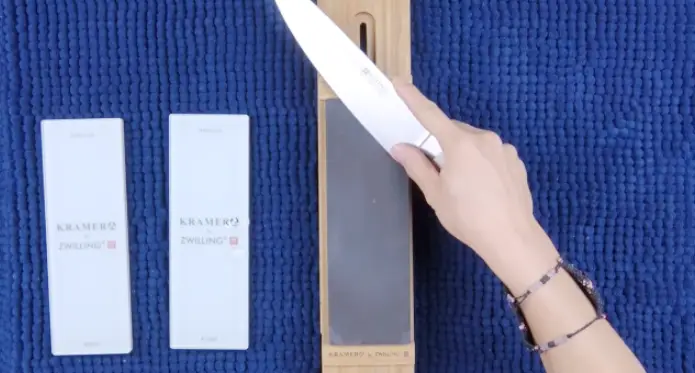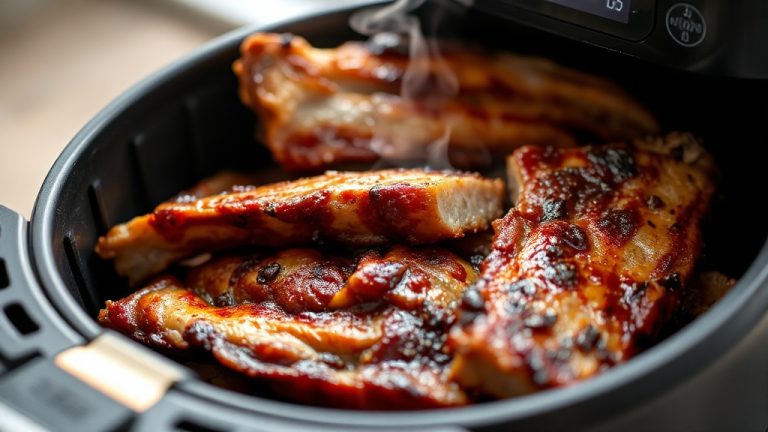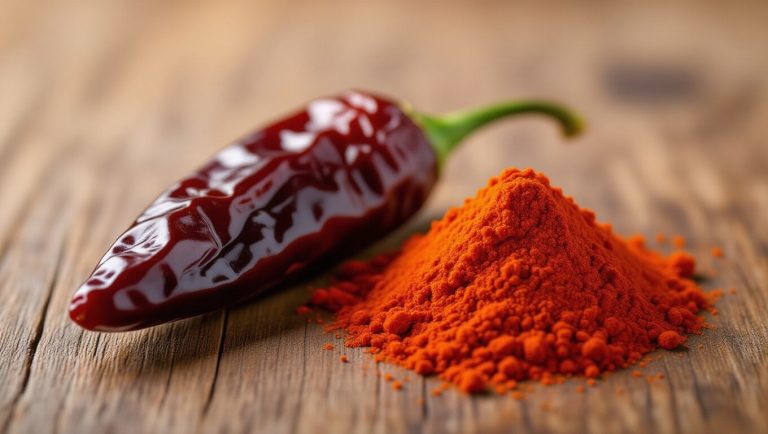How to Sharpen Wusthof Knives: 2 Different Methods
Keeping your Wusthof knives in optimal condition is essential for maintaining their cutting performance. Day-to-day use and exposure to various elements can gradually wear down the blade, resulting in a dull edge that can make food preparation a tedious experience.
But you have to know the proper techniques to sharpen them without damaging the blades or the knife’s integrity. I have researched how to sharpen Wusthof kitchen knives and found two effective methods.
One method involves using a hand-held knife sharpener, while the other method utilizes a whetstone. I will explain both methods in detail so you may choose the method that is most appropriate for you.
How to Sharpen Wusthof Knives: 2 Methods to Follow
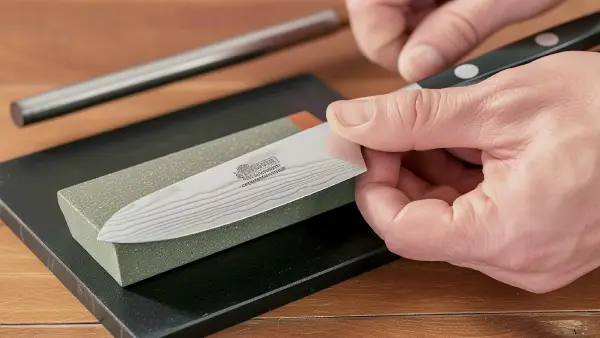
To sharpen your Wusthof knives, you will need to employ one of the following methods that I have found to be most effective:
- Method 1: Sharpening Wusthof knives using hand-held knife sharpener
- Step 1: Choose the appropriate grit
- Step 2: Setup the sharpener
- Step 3: Insert the blade into the sharpener
- Step 4: Slowly pull the knife toward you
- Method 2: Sharpening Wusthof knives using whetstone
- Step 1: Prepare and set the whetstone
- Step 2: Position the knife and slide the blade across
- Step 3: Flip and repeat
- Step 4: Rinse and dry the knife
Now I will go into more detail about each method and give you some tips to ensure that your Wusthof knives stay sharp for a long time.
Method 1: Sharpening Wusthof Knives Using Hand-Held Knife Sharpener
One of the simplest and quickest ways to sharpen your Wusthof knives is by using a hand-held knife sharpener. Here’s how you can do it:
Step 1: Choose the Appropriate Grit
You need to select the appropriate sharpening grit to sharpen your Wusthof knife using a hand-held knife sharpener. Based on my research, it’s best to consider the coarse slot for dull edges and the fine slot for honing and polishing.
The coarse slot is designed to remove material and restore the blade’s sharpness, while the fine slot provides a smoother finish and helps maintain the knife’s edge.
Step 2: Setup the Sharpener
Now that you’ve picked the right grit, it’s time to set up the knife sharpener. Place the hand-held knife sharpener on a flat surface and hold the sharpener with one hand and the knife handle with the other.
This grip will provide maximum control and enable you to sharpen the knife as safely as possible. It’s also advisable to ensure the surface is dry before starting the process.
Step 3: Insert the Blade Into the Sharpener
After setting up the sharpener for sharpening your Wusthof knife, the next step is to fully insert the blade into the slot perpendicular to the counter, ensuring that the blade aligns with the chosen notch.
This ensures that the blade is positioned correctly for sharpening. Gently guide the blade into the slot, maintaining a steady hand to prevent any mishaps. Take care to avoid any sudden movements that could cause injury.
Step 4: Slowly Pull the Knife Toward You
Now, slowly pull the knife toward you, using only the weight of the blade, through the appropriate notch in the sharpener, ensuring you avoid applying excessive pressure that may compromise the edge.
Remember to maintain a consistent angle throughout the process. Always pull the blade from the heel to the tip, never back and forth. Repeat this motion several times to ensure an even sharpening of the entire blade.
Method 2: Sharpening Wusthof Knives Using Whetstone
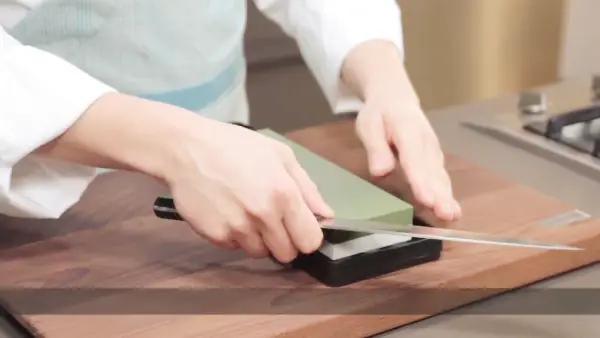
Another effective method for sharpening your Wusthof kitchen knives is using a whetstone. Below I have outlined the steps to follow:
Step 1: Prepare and Set the Whetstone
To begin sharpening your Wusthof knife using a whetstone, you must first prepare and set up the stone correctly. To start, submerge the stone in water for approximately 10 minutes.
By doing so, the stone is able to absorb water and sharpen more effectively. Place the stone on a flat, slip-resistant surface with the coarse side facing up.
This setup guarantees stability while sharpening and prevents accidents. When you have completed this step, you are ready to move on to the next one.
Step 2: Position the Knife and Slide the Blade Across
Once the whetstone is prepared, you can start sharpening your Wusthof knife. With your dominant hand, grasp the knife handle and place the blade’s tip on the stone.
Maintain a 14-degree angle to the stone, which is the optimal angle for Wusthof knives to be sharpened. Make sure to exert light pressure instead of forcefully pressing the knife onto the stone. Proceed to slide the blade slowly, starting from the tip to the heel.
Step 3: Flip and Repeat
After completing the sharpening process on one side of the blade, turn the knife over and repeat the same technique for the other side.
Once this is done, flip the stone over to the fine side and repeat the sharpening process. The fine side of the stone will effectively remove any leftover steel particles, ensuring that the blade is sharpened evenly and thoroughly.
Step 4: Rinse and Dry the Knife
When you have completed the sharpening process, rinse the knife in water to ensure any remnants have been removed. Dry the knife immediately afterward, as this will prevent any watermarks or corrosion on the blade.
Drying the knife instantly also allows you to check that the blade’s edge has been sharpened correctly and that there are no imperfections.
How often should you sharpen your Wusthof knives?
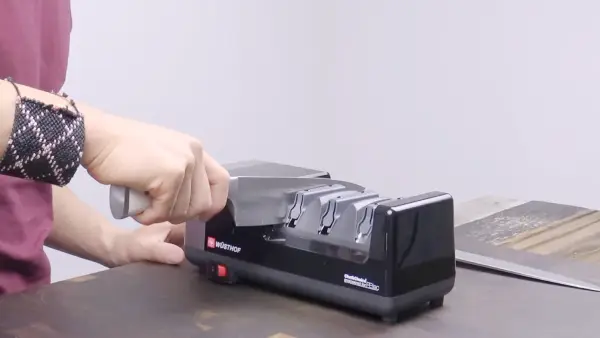
Based on my analysis, to keep your Wusthof knives in top condition, it’s recommended to hone your knives every 2-3 uses using a honing steel.
As for sharpening, it’s generally advised to sharpen your knives 1-2 times a year, depending on how frequently you use them. However, the frequency of sharpening ultimately depends on your specific usage and the tasks you perform with the kitchen knives.
Assess the sharpness of the blades regularly and use a sharpening method, such as a whetstone or hand-held sharpener, when needed. This regimen will ensure that your Wusthof knives remain in excellent cutting condition.
How do you know when your Wusthof knife needs sharpening versus honing?
When assessing your Wusthof knife’s sharpness, you can differentiate between the need for honing and sharpening based on how the blade cuts and feels during use. If your knife still feels relatively sharp but isn’t performing as well as it used to, it likely needs honing.
Honing realigns the blade’s edge, addressing any slight bends or folds that occur with regular use. On the other hand, if your knife is noticeably dull and struggles to cut through food, it’s time for sharpening.
Sharpening removes material from the blade to create a new, sharp edge. Remember, regular honing can prolong the time between sharpening sessions, so it’s essential to understand the subtle differences in how your knife behaves to determine the appropriate maintenance method.
Keep Your Wusthof Knives Sharp and Enjoy Effortless Food Preparation
Now that you know how to sharpen Wusthof knives using two different methods, you can keep your kitchen knives in top condition for longer. You can use any methods that I have shared based on your preference and the tools available to you.
Whether you opt for the convenience of a hand-held knife sharpener or the precision of a whetstone, regular maintenance ensures that your Wusthof knives remain sharp, reliable, and ready to tackle any culinary task with ease.
Keep honing and sharpening as needed to enjoy effortless food preparation and a consistently satisfying cooking experience.

